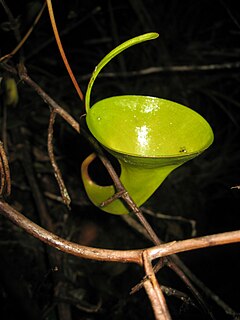Related Research Articles

Marine hatchetfishes or deep-sea hatchetfishes are small deep-sea mesopelagic ray-finned fish of the stomiiform subfamily Sternoptychinae. They should not be confused with the freshwater hatchetfishes, which are not particularly closely related Teleostei in the characiform family Gasteropelecidae.

Polyipnus is a genus of oceanic ray-finned fish in the family Sternoptychidae. This is the largest genus of the marine hatchetfishes subfamily Sternoptychinae and indeed of the entire Sternoptychidae. It is not quite as apomorphic as their relatives; it may be that the genus is actually a paraphyletic assemblage of less advanced Sternoptychinae and would need to be split.

Bromus is a large genus of grasses, classified in its own tribe Bromeae. They are commonly known as bromes, brome grasses, cheat grasses or chess grasses. Estimates in the scientific literature of the number of species have ranged from 100 to 400, but plant taxonomists currently recognize around 160–170 species.

The water deer is a small deer superficially more similar to a musk deer than a true deer. Native to China and Korea, there are two subspecies: the Chinese water deer and the Korean water deer. Despite certain anatomical peculiarities, including a pair of prominent tusks, and its lack of antlers, it is classified as a cervid. Yet, its unique anatomical characteristics have caused it to be classified in its own genus (Hydropotes) as well as its own subfamily (Hydropotinae). However, studies of mitochondrial control region and cytochrome b DNA sequences placed it near Capreolus within an Old World section of the subfamily Capreolinae. Its prominent tusks, similar to those of musk deer, have led to both subspecies being colloquially named vampire deer in English-speaking areas to which they have been imported. The species is listed as vulnerable by the IUCN. It was first described to the Western world by Robert Swinhoe in 1870.

Nepenthes inermis is a tropical pitcher plant endemic to Sumatra. The specific epithet inermis is Latin for "unarmed" and refers to the upper pitchers of this species, which are unique in that they completely lack a peristome.

Nepenthes × pyriformis is a natural hybrid involving N. inermis and N. talangensis. It is known only from Mount Talang in Sumatra, to which N. talangensis is endemic. Nepenthes talangensis was only described as a distinct species in 1994. Prior to this it was placed within N. bongso and some of the older literature identifies this hybrid as N. bongso × N. inermis.

Lambertia inermis, Noongar chittick, is a shrub which is endemic to south-west Western Australia. It grows to 6 metres high and flowers from spring to winter. A more complete description is given in Florabase and Australian Flora online.

Bromus inermis is a species of the true grass family (Poaceae). This rhizomatous grass is native to Europe.

Polyipnus triphanos, commonly known as the threelight hatchetfish, is a species of ray-finned fish in the family Sternoptychidae. It occurs in deep water in the Indo-Pacific Ocean, at depths between about 322 and 966 metres.
Polyipnus polli, commonly known as the round hatchetfish, is a species of ray-finned fish in the family Sternoptychidae. It occurs in deep water in the eastern Atlantic Ocean, at depths between about 250 and 600 metres.
Polyipnus elongatus is a species of ray-finned fish in the family Sternoptychidae. It can be found in deep water in the southwestern Pacific Ocean around Australia, at depths down to about 400 metres (1,300 ft).
Polyipnus matsubarai is a species of ray-finned fish in the genus Polyipnus. Its standard length is 9.7 cm and lives at a depth of 240 metres. They inhabit the waters around Japan, the Philippine Sea, and Hawaiian-Emperor Seamounts.
Polyipnus kiwiensis, commonly known as the kiwi hatchetfish, is a species of ray-finned fish in the genus Polyipnus. They live in the Tasman Sea off Australia and New Zealand. They are carnivores.
Polyipnus asper is a species of ray-finned fish in the genus Polyipnus. It is found in the Eastern Indian Ocean in shallow waters from 0 - 384 meters.
Polyipnus bruuni is a species of ray-finned fish in the genus Polyipnus. It is found in the Western Indian Ocean off Kenya in shallow waters from 0 - 240 meters.
Polyipnus soelae, commonly known as the soela hatchetfish, is a species of ray-finned fish in the genus Polyipnus. It is found in Indonesia with a depth range of 300 - 520 m.
Polyipnus omphus is a species of ray-finned fish in the genus Polyipnus. It is found in the Western and Central Pacific and lives below 200 m.
Polyipnus ruggeri is a species of ray-finned fish in the genus Polyipnus. It is found in the Indo-Pacific.
Polyipnus fraseri is a species of ray-finned fish in the genus Polyipnus. It is found in the Western Pacific Ocean.
Polyipnus indicus is a species of ray-finned fish in the genus Polyipnus. It is found in the Western Indian Ocean. It has a depth range of 50 - 500 m.
References
- ↑ "Polyipnus inermis". www.fishbase.de. Retrieved 2021-04-06.